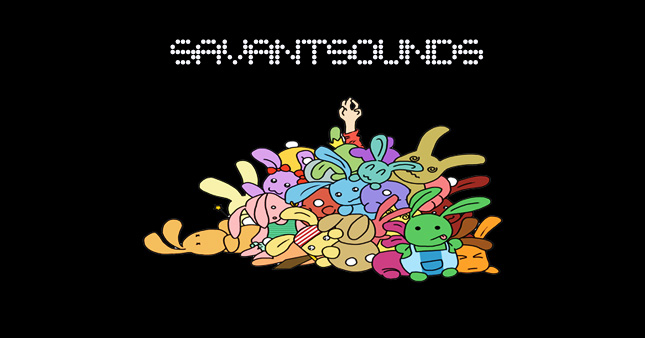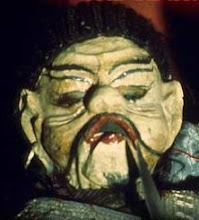
Swans was an influential American post-punk band active from 1982 to 1997, led by singer, songwriter and multi-instrumentalist Michael Gira. The band was one of the few groups to emerge from the early 1980s New York No Wave scene and stay intact into the next decade. Formed by Gira in 1982, the Swans employed a shifting lineup of musicians until their dissolution in 1997. Besides Gira, the only other constant members were keyboardist/vocalist/songwriter Jarboe from 1984 to 1997, and semi-constant guitarist Norman Westberg. The band was noted for droning vocals and strange instrumentation.
Biography
Early years (1982–1985)
Initial influences
The earliest known lineup of Swans comprised Gira on bass guitar and vocals, Jonathan Kane on drums, and Sue Hanel on guitar. Hanel's only recordings with the group are on the compilation Body to Body, Job to Job, but the ambiguous personnel credits do not make it clear on which songs she performed; Kane stated that "Sue was the most fearsome guitarist we’d ever heard in New York. She was unbelievable." [5]
Hanel did not stay long in the group, and by the time of their recording debut, she had been replaced by Bob Pezzola. This lineup of the group also featured saxophonist Daniel Galli-Duani. The debut EP, Swans, released on Labor, is markedly different from anything they would do later. The plodding tempos and distorted, detuned guitar work is reminiscent of such post-punkJoy Division. However, the minimal chord structures owe more to blues, while the jazzNo WaveCop. The closest reference point to the early Swans sound, as pointed out by one internet reviewer, is probably The Birthday Party, although far less overtly satirical. outfits as instrumentation and awkward time signatures are evidence of Swans' roots in the scene of the late 1970s, which had more or less collapsed by the release of
Early press comparisons
In the same article cited above, Kane compares Swans to blues icon Chester Burnett, a.k.a. Howlin' Wolf. While this comparison might initially seem unlikely, there are in fact some similarities worth noting -- the music of early Swans was often based on a single riff, played repeatedly to hypnotic effect. Some of Burnett's songs -- especially the songs penned by Burnett himself -- have a similar structure and quality. Their early music was typified by slow and grinding guitar noise, and pounding drums, punctuated by Gira's morbid and violent lyrics (inspired by Jean Genet and the Marquis de Sade), usually barked or shouted. Critic Ned Raggett describes Swans' early recordings as "aggressive beyond words." [6]
Their first full-length release, Filth (1983), featured driving, choppy rhythms and abrasive drums. The whole is reminiscent of earlier No Wave bands, such as Mars, and the work of Swans' contemporaries, like Sonic Youth's Confusion Is Sex and Kill Yr Idols; but Raggett[7] Filth was the first album to feature guitarist Norman Westberg, who would play a vital role in much of Swans' music, and would be featured on every subsequent studio album other than Love of Life. contends that "early Swans really is like little else on the planet before or since."
Cop (1984) and the originally untitled Young God EP were both released in 1984 and re-released together on CD in 1992. This release has been known by several names, usually by one of its two A-sides, such as "I Crawled" or, infamously, as "Raping a Slave". This release is often confused with their self-titled debut. The music continues in the same vein as Filth, and is again vaguely reminiscent of heavy metal music played in extreme slow motion. Swans were, in this era, GiraWestberg on guitar, Harry Crosby on bass guitar, and Roli Mosimann on drums. Gira's vocals had changed slightly, becoming slowly more melodic, although the snarl still remained. Some of the songs on the EP, particularly "Young God" and "I Crawled", have an actual vocal melody, if rudimentary, hinting at the sounds of future releases. Young God is considered by many to be the best of their early albums for this reason.[8] on vocals, 
Justin Broadrick shared this impression of the group:
| “ | The first Swans record I owned was Slave EP, and it absolutely blew me away… it was a sound that I always wanted to hear, just the bleakest and blackest. The minimalist approach of the music, that was what really influenced me. It was non-genre-specific, with a total lack of baggage… purely abstract, surreal, and violent. It communicated to me in a very special way, and taught me that heavy metal could be stripped of everything and reduced to its most primal form. None of the traditional genre bullshit, you know? Really changed my perspective on music at the time. Joy Division, Killing Joke—Swans took the blueprint from these bands and just pushed it way, way further, more outside of the whole rock thing generally, and paved the way for me.[9] | ” |
Live shows
One of the trademarks of Swans' early period was playing at painfully loud volumes during concerts, to the point where some audience members would vomit[citation needed] or the police[10][11] This lent a reputation to the name Swans which was one of the contributing factors in Gira's retirement of the band in 1997. [12] would stop the show.
Mid-period (1986–1988)
Collaboration with Jarboe begins
1986's Greed had a new addition to the group with vocalist/keyboardist Jarboe joining the band.[13] Her presence began a slow thawing in the overt brutality and energy of the Swans' early work. For example, both the opening track, "Fool," and the title track are sung, albeit rather ominously.
Collaboration with Algis Kizys begins
Greed also marked the introduction of bassist Algis Kizys as a long-time, near-constant member. The album is not as brutal or noisy as their previous releases but is still an extremely ominous and dark record. This was followed by its "twin" album, Holy Money, the first to feature Jarboe on lead vocals.
Introduction of acoustic elements
Holy Money was also the first album by Swans to incorporate acoustic elements. In particular, the eight-minute dirge "Another You" starts with a bluesy harmonica introduction. It also marks the introduction of religious themes in Swans records with the sacrificial ode "A Hanging", complete with gospel-like backing vocals from Jarboe.
Children Of God (1987) further expanded Jarboe's role, acting as a foil to Michael Gira's tales of suffering, torture, and humiliation. The stories portrayed here, however, are ever the more unusual, given their juxtaposition—and admixture—with religious imagery. The intention was neither to mock nor embrace religion, but experiment with the power inherent in its messages and the hypocrisy of many of its leaders.[14]
Some songs, such as the raging "Beautiful Child," retain the vocal style of earlier days, but many are quite tame. The almost baroque "In My Garden," for example, added an extra dimension with piano (used before on "Fool" and "Sealed in Skin" to far grimmer effect) and acoustic guitar. Some songs walk the line on this front. Obvious examples include "Sex, God, Sex" (heavy metal-like bass riffs with blues and gospel-inspired singing), "Blood and Honey" (a murder ballad with early post-rock tendencies), and "Blind Love" (a lengthy song, alternating between intoned vocals and violent instrumental passages). Gira considers this to be the band's major turning point.
Later years (1988-1997)
Stylistic shift
After the Children of God album, Gira professed himself tired with the band's fearsome reputation for noise, feeling that their audience now had expectations that he had no intention of fulfilling. He made a conscious decision to tone down the band's sound, introducing more acoustic elements and foregrounding Jarboe as a singer. The first results of this shift in direction were the two records recorded by Gira and Jarboe under the names Skin (in Europe) and World of Skin (in the USA). The first, Blood, Women, Roses, featured Jarboe on lead vocals, and the second, Shame, Humility, Revenge, featured Gira on lead vocals. Both were recorded together in 1987, although Shame, Humility, Revenge was not released until 1988. These albums were full of slow, ethereal, melancholy, dirge-like songs, sounding like stripped down acoustic versions of the Children of God songs.
The band continued this transformation with an unexpected cover of the Joy Division song "Love Will Tear Us Apart," which was released in 1988 on Product Inc. in a confusing array of 7- and 12-inch formats. Both Gira and Jarboe sang lead vocals on different versions of the song. In later years Gira dismissed this release as a mistake, and for a long time refused to reissue his own vocal version, although Jarboe's version was re-released much sooner.
Major label debut
This single was followed by The Burning World (1989), Swans' first and only major label album. Released on Uni/MCA Records, the record was produced by Bill Laswell and expanded the acoustic palette introduced on Greed and Children of God. For this album, the core line-up of Gira, Jarboe and Westberg was augmented by session musicians, and the distinctive heavy guitar element of their earlier work was toned down significantly in favor of folk and world music elements. Though Swans would later explore more acoustic music with similar moods, Gira has stated that, while he admires much of Laswell's work, his efforts with Swans were simply a mismatch.
Flirtations with pop music
The Burning World was the first Swans album to feature more conventional pop melodies. Gira's lyrics still favored themes of depression, death, greed and despair, but were actually sung, rather than the chanting or shouting typical of earlier material. They even covered Steve Winwood's popular Blind Faith hit "Can't Find My Way Home" in 1989, one of two singles from the LP.
In 1990, Gira and Jarboe released the third and final World of Skin album, Ten Songs From Another World. It was less successful than the previous two 'Skin' albums.
End of major label involvement
Michael Gira's disillusionment with their Uni/MCA exploits led to White Light from the Mouth of Infinity (1991), a successful blending of earlier hard rock and later pop styles. Produced by Gira, the album blended acoustic rock, blues and hypnotic guitar noise successfully, resulting in an album more complex than anything they had released in the past. This album was followed by Love of Life (recorded by Martin Bisi in 1992), and the EP single Love of Life/Amnesia, taking the group even farther into experimentation, and then The Great Annihilator (1995), considered to be one of the band's most accessible releases, possibly through being their most straightforward. The songwriting style and musical approach, however, would take a more unusual turn the following year.
Demise
With other projects occupying his time, Michael Gira decided to bring an end to the group with one last album and a world tour. Soundtracks For The Blind (1996) was the result: a mammoth two-disc album comprising Jarboe-supplied field recordings, experimental music, dark ambientpost-industrial epics, post rock suites and acoustic guitar. Gira, Jarboe, and other long time collaborators created one of the most highly regarded albums of their career. Swans Are Dead (1998) brings together live recordings from their 1995 and 1997 tours, documenting the energy and stage presence of Michael Gira and Jarboe. In an interview with Soundsect, Gira revealed that there is more live material that may be released in the future. He described these unreleased recordings as "fairly spectacular". [15] soundscapes,
Post-breakup (1997-present)
After dissolving Swans, Gira formed Angels of Light, continued his work with Young God Records and Jarboe continued her solo work.
Studio albums
Wikipedia®2009



































